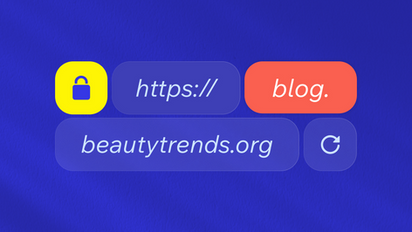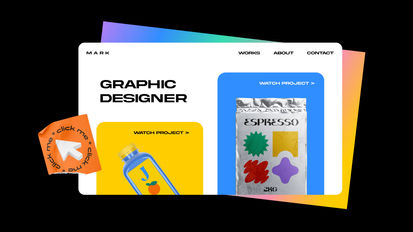Web Builder Free in 3 Steps
Web Builder Free Challenges
Web Builder Free
In the digital age, having a strong online presence is essential for artists looking to showcase their work and connect with new audiences. A well-designed website can serve as a virtual gallery, allowing artists to display their artwork and tell their story to the world. However, building a website from scratch can be a daunting task, especially for those without technical expertise or a large budget. Fortunately, there are a number of free site builders available that make creating a professional-looking website easier than ever.

Web Builder Free FAQ
Web Builder Free
Web app development involves creating software programs that are accessed through a web browser. Unlike traditional desktop applications that are installed on a user’s device, web apps are hosted on a server and can be accessed from any device with an internet connection. This makes them highly versatile and convenient for users who need to access their information on-the-go.
The process of web app development starts with defining the project requirements and objectives. This involves understanding the target audience, the goals of the app, and the features that will be included. Once the requirements have been gathered, the next step is to create a wireframe or mockup of the app to visualize the layout and design.
After the wireframe has been approved, the development team can start coding the app. Web apps are typically built using a combination of front-end and back-end technologies. The front-end is responsible for the user interface and user experience, while the back-end handles the server-side logic and database management.
For the front-end development, developers often use HTML, CSS, and JavaScript. HTML (Hypertext Markup Language) is used to create the structure of the web page, while CSS (Cascading Style Sheets) is used to style and layout the content. JavaScript is used to add interactivity and dynamic elements to the app, such as animations and form validation.
In addition to these core technologies, developers may also use frameworks and libraries such as Angular, React, or Vue.js to streamline the development process and enhance the functionality of the app. These tools provide pre-built components and modules that can be easily integrated into the app, saving time and effort for the developers.
On the back-end side, developers use server-side languages such as Node.js, Ruby on Rails, or Python to handle the business logic of the app. These languages allow developers to create APIs (Application Programming Interfaces) that communicate with the front-end and database, enabling data to be stored, retrieved, and manipulated.
Databases are an essential component of web app development, as they store and manage the app’s data. Common database systems used in web development include MySQL, MongoDB, and PostgreSQL. Developers use SQL (Structured Query Language) to interact with the database and perform queries to fetch and update data.
Once the front-end and back-end components have been developed, the next step is to test the app for bugs and performance issues. Quality assurance (QA) testing involves checking the app’s functionality, usability, and security to ensure it meets the project requirements and user expectations.
After the app has been thoroughly tested, it is ready for deployment. Web apps are typically hosted on a web server or cloud platform, such as AWS or Azure. This allows users to access the app through a URL in their browser, without needing to install any software on their device.
That’s where a website portfolio case study device generator comes in. This powerful tool allows you to easily create a professional-looking website portfolio in just a few clicks. In this article, we will explore the benefits of using a website portfolio case study device generator and how it can help you take your online presence to the next level.
What is a Website Portfolio Case Study Device Generator?
A website portfolio case study device generator is a tool that helps you create a visually appealing and user-friendly website portfolio without the need for any coding or design skills. This tool is typically web-based, meaning you can access it from any device with an internet connection.
One of the key features of a website portfolio case study device generator is the ability to easily showcase your work in a professional and organized manner. You can upload images, videos, and other media to your portfolio and arrange them in a visually appealing layout. Additionally, many generators also offer customizable templates and themes, allowing you to personalize your portfolio to fit your brand and style.
Benefits of Using a Website Portfolio Case Study Device Generator
1. Save time and effort: Creating a website portfolio from scratch can be time-consuming and overwhelming, especially if you’re not familiar with coding or design principles. A website portfolio case study device generator simplifies the process by providing pre-designed templates and easy-to-use tools, allowing you to create a professional portfolio in a fraction of the time.
2. Professional and polished look: With a website portfolio case study device generator, you can rest assured that your portfolio will have a polished and professional look. The templates provided are designed by experts in the industry, ensuring that your portfolio will make a great impression on potential clients and employers.
3. Easy to update and maintain: Another advantage of using a website portfolio case study device generator is that it makes it easy to update and maintain your portfolio. You can easily add new work, update information, and make changes to your portfolio without having to deal with complicated coding or design tools.
4. Showcase your work effectively: One of the main purposes of a website portfolio is to showcase your work and demonstrate your skills and expertise. A website portfolio case study device generator allows you to effectively showcase your work in a visually engaging way, making it easy for visitors to see what you have to offer.
5. Reach a wider audience: By having a professional website portfolio, you can reach a wider audience and attract more potential clients or job opportunities. With a website portfolio case study device generator, you can easily share your portfolio on social media, include it in your email signature, or even link to it on your resume.

What Is Web Builder Free?
Web Builder Free
In conclusion, a website portfolio case study device generator is a valuable tool for anyone looking to create a professional and effective online portfolio. Whether you’re a freelancer, artist, designer, or any other creative professional, a website portfolio can help you showcase your work and attract new opportunities. By using a website portfolio case study device generator, you can save time, create a polished looking portfolio, and reach a wider audience. So why wait? Start creating your website portfolio today and take your online presence to the next level.


